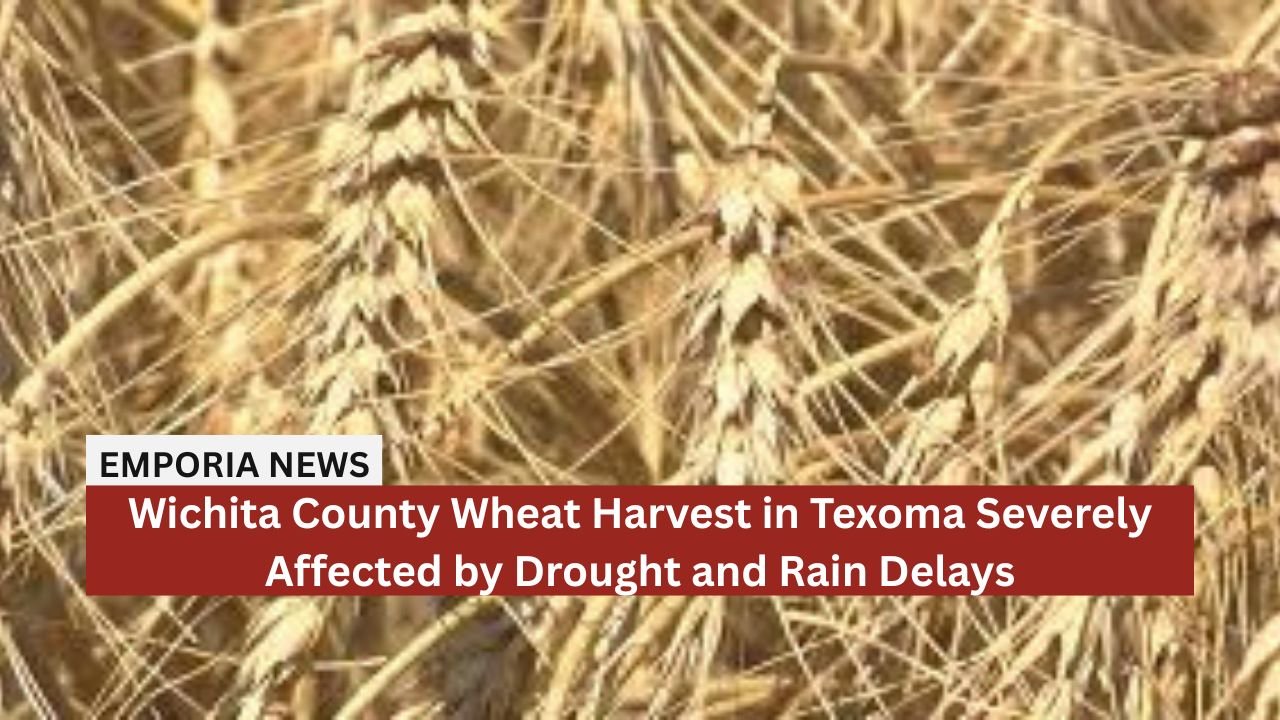The wheat harvest in Texoma has been severely disrupted this year due to a combination of early-season drought and ongoing rainfall. As a result, a substantial portion of Wichita County’s wheat is no longer suitable for harvesting.
These extreme and unpredictable weather patterns are not only impacting this year’s output but are also pushing back the timeline for planting the next season’s crop.
Early Drought Leaves Lasting Damage
According to Dwayne Peirce, a farm expert and Texas A&M AgriLife Extension agent for Wichita County, the growing season started with unusually dry conditions. This initial lack of moisture had a devastating impact on early-planted wheat.
“We were extremely dry at the beginning of the season,” Peirce explained. “The older wheat planted during that period struggled so much that it never recovered, even when the rains eventually came.”
This prolonged dryness followed by excessive rain has made it impossible for many fields to produce viable crops.
Massive Crop Losses Reported
An estimated 60% of the wheat crop in the region has been lost, leaving only 40% of the fields harvestable. However, the challenges don’t end there. Peirce noted that of the remaining wheat, only 15% to 20% is of high enough quality to yield a profitable return for farmers.
This double blow—both in terms of quantity and quality—is placing immense financial pressure on local producers.
Rainfall Causes Ongoing Harvest Delays
Peirce described how the unrelenting rains have continued to push back harvesting schedules. Typically, the wheat harvest in Texoma is completed by early June, but this year tells a different story.
“We’re usually done by the first few days of June. Now it’s mid-June, and we still have half of our acreage left to harvest,” he said. “Every time it rains, we’re delayed even more.”
These delays not only extend the harvest season but also jeopardize the viability of the remaining crop, further compounding farmers’ woes.
This season highlights the urgent need for adaptive farming strategies to combat climate volatility. Support from agricultural agencies will be essential to help farmers recover and prepare for future uncertainties.
Financial Consequences for Farmers
The extended harvest and lower yields mean significantly reduced income for local farmers. With less money generated from this season’s crop, many will struggle to reinvest in next year’s planting—creating a ripple effect on future production.
“If there’s any chance at all to get into the fields, even with rain in the forecast, farmers are going to take it,” Peirce emphasized. “They may have to work in muddy fields and risk damaging the soil, but leaving wheat to rot in the field is not an option.”
Farmers Forced to Make Difficult Choices
Faced with limited harvesting opportunities, many producers are opting to collect whatever crop they can, even under poor conditions. This may lead to long-term impacts on soil health due to machinery use in wet fields, but with crop quality degrading by the day, harvesting now is the lesser evil.
Farmers are prioritizing short-term survival over long-term field condition to recover some income from an already dismal season.
The 2025 wheat harvest in Texoma has turned into a cautionary tale of how volatile weather patterns can upend an entire growing season.
With over 60% of the crop lost and only a fraction of the remainder viable for profit, local farmers are facing not just a failed harvest but serious questions about the future of wheat production in the region.
Unless weather patterns stabilize, and financial support or strategic planning helps cushion the impact, Texoma’s agricultural output—and farmers’ livelihoods—will remain in jeopardy. As Peirce rightly points out, every window of opportunity, no matter how small, is now critical for survival.




